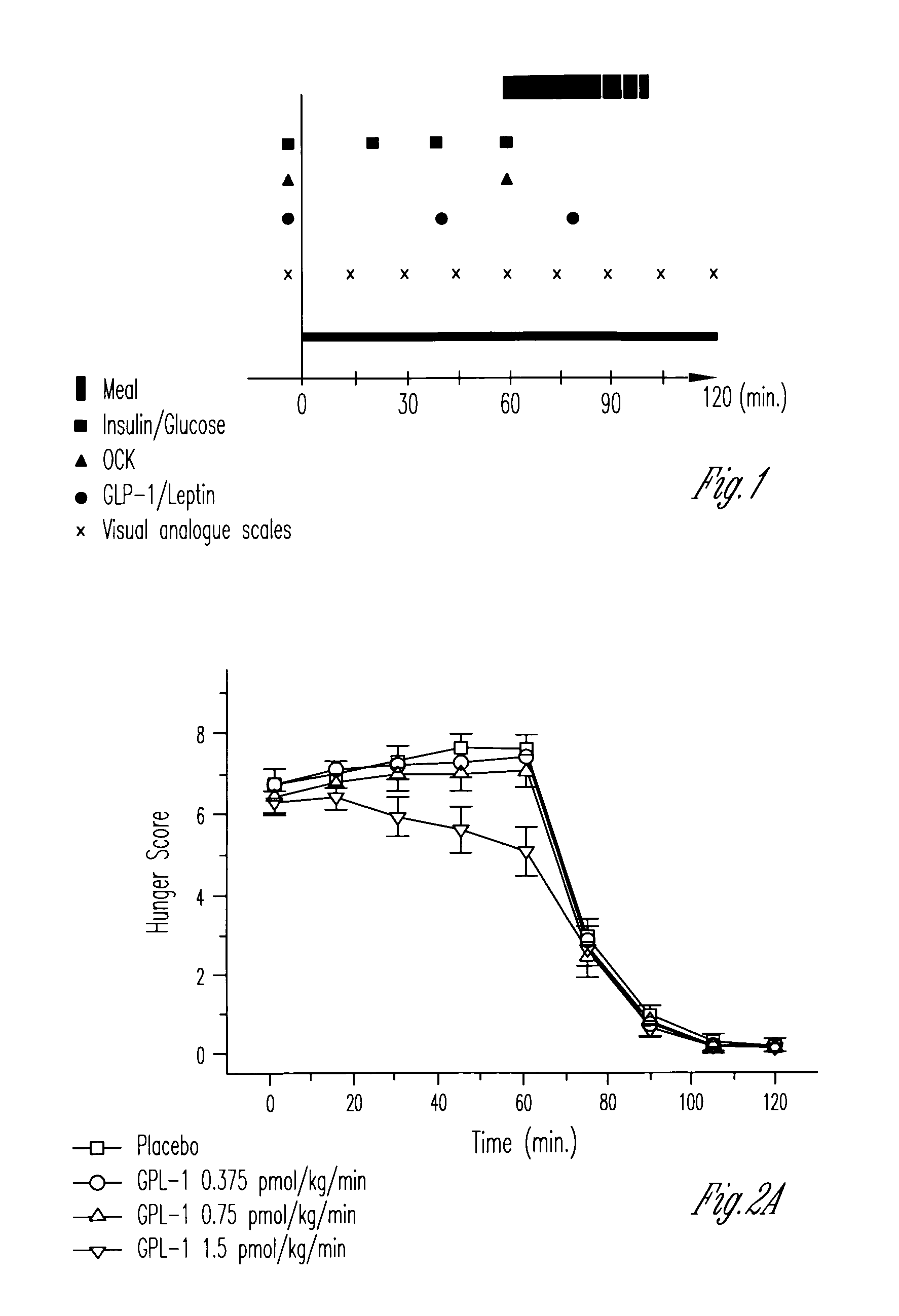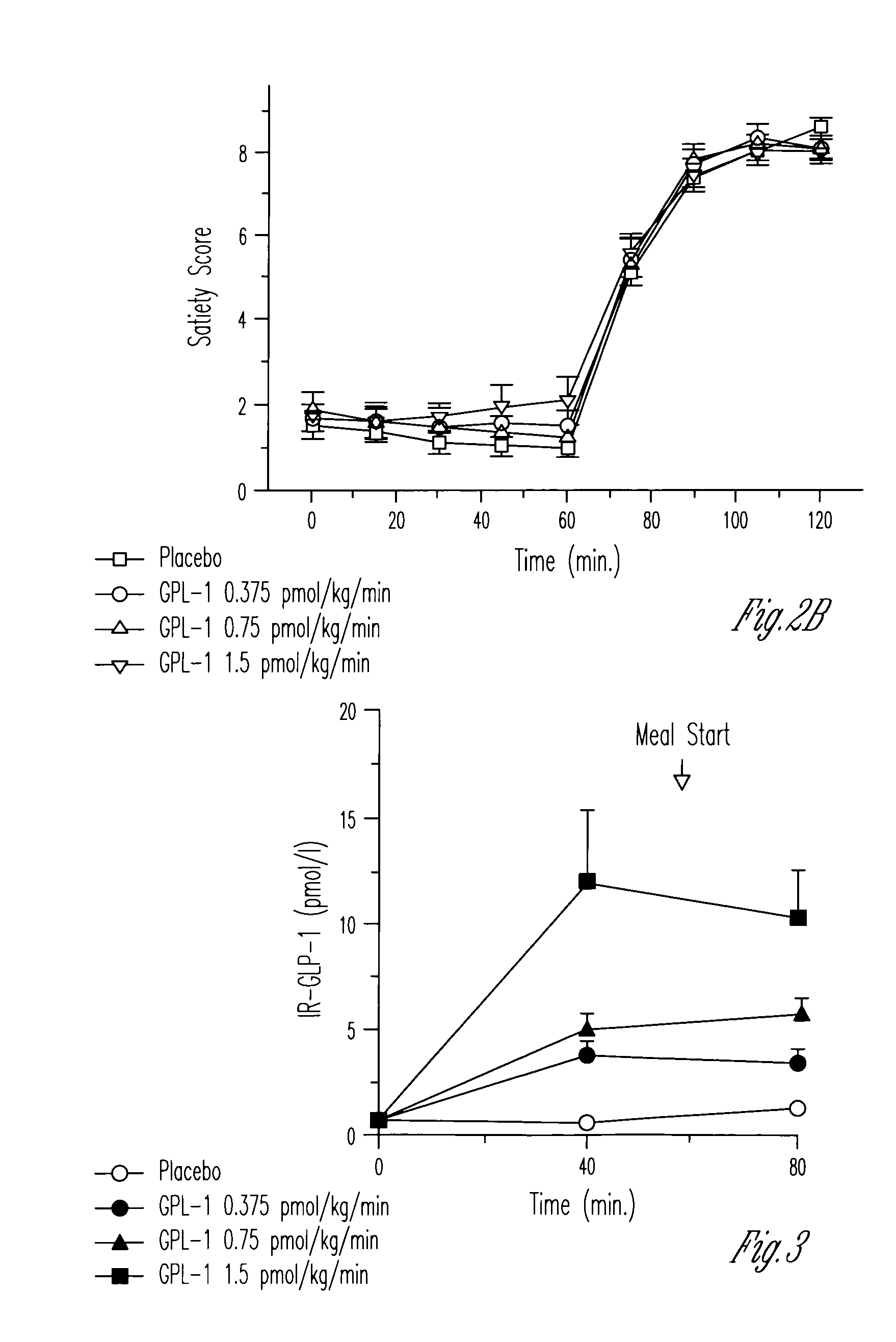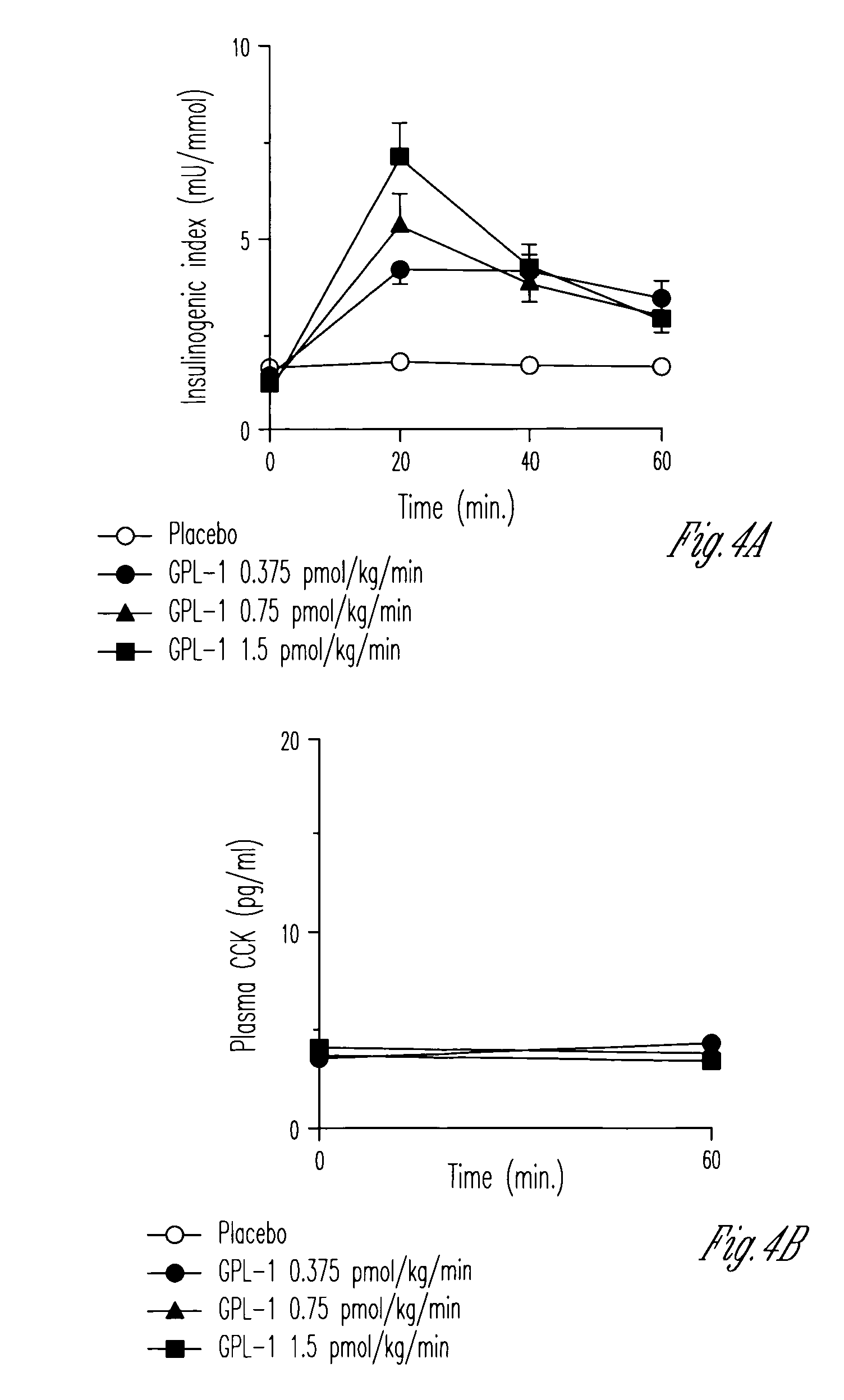Human appetite control by glucagon-like peptide receptor binding compounds
a glucagon-like peptide and receptor-binding technology, applied in the field of appetite control, can solve the problems of major uncertainty whether glp-1 is safe for humans, functional deterioration, and the pursuit of further investigation of glp-1 for humans, so as to reduce spontaneous food intake, control appetite, and control appetite
- Summary
- Abstract
- Description
- Claims
- Application Information
AI Technical Summary
Benefits of technology
Problems solved by technology
Method used
Image
Examples
example 2
[0066]Twelve male patients were recruited for the study who had diabetes mellitus type 2 for at least one year. Patients were admitted to a Research Unit after given written informed consent and after the experimental protocol had been explained to them. The mean age of the patients was 55±2 years; their mean HbA1C was 8.1±4 and their mean BMi was 29.4±1.2. Seven patients were on oral antidiabetics. The participants were tested on two different days in a placebo-controlled, randomized, double-blind, crossover study. The two test days were separated by at least one week and by no more than three weeks.
[0067]On each test day, patients arrived in the Research Unit in the morning, having fasted overnight. A standardized, fixed energy breakfast was then served and it had to be completed before 8:30 a.m. After breakfast, patients were able to read and listen to music. At 11:00 a.m., two venflon catheters were inserted into the anticubital veins of each arm, one for infusion, the other one...
PUM
| Property | Measurement | Unit |
|---|---|---|
| concentrations | aaaaa | aaaaa |
| chromatography | aaaaa | aaaaa |
| hydrophobic interaction chromatography | aaaaa | aaaaa |
Abstract
Description
Claims
Application Information
 Login to View More
Login to View More - R&D
- Intellectual Property
- Life Sciences
- Materials
- Tech Scout
- Unparalleled Data Quality
- Higher Quality Content
- 60% Fewer Hallucinations
Browse by: Latest US Patents, China's latest patents, Technical Efficacy Thesaurus, Application Domain, Technology Topic, Popular Technical Reports.
© 2025 PatSnap. All rights reserved.Legal|Privacy policy|Modern Slavery Act Transparency Statement|Sitemap|About US| Contact US: help@patsnap.com



